Animal Protection Activists March in Havana
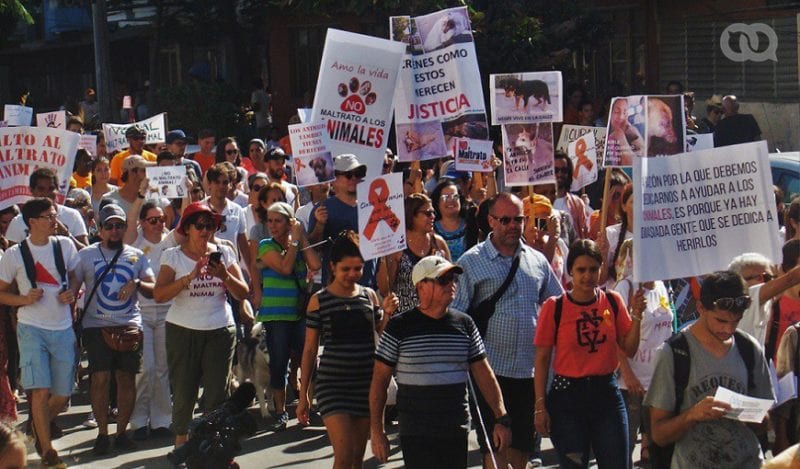
By Pedro Sosa Tabio (El Toque)
HAVANA TIMES – “Law, yes! Abuse, no!” residents on 25th Street in Havana’s Vedado neighborhood heard, while hundreds of people marched by with orange ribbons, signs and dogs, protesting animal abuse, on Sunday April 7th.
“This isn’t the first time we are marching, it has been previously organized by Aniplant (Cuban Association for the Protection of Animals and Plants),” Beatriz Batista explains, a Social Communications student at Havana University and one of the event’s main organizers. However, it had never reached such great levels of participation.
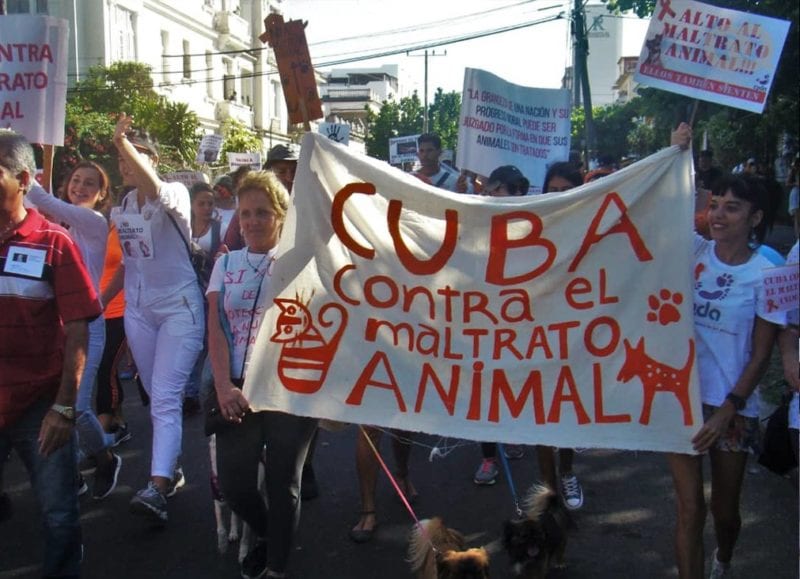
According to her, in previous marches they weren’t allowed to carry placards in favor of an animal protection act or against animal abuse on the whole. There was even a march that only took place in Colon Cemetery, where Jeanette Ryder’s grave can be found, a US philanthropist who lived in Cuba for several decades, and there is a statue of her loyal companion, Rinti, resting at her feet.
“This year, independent animal protectors decided to take the initiative and do what was needed in order to get authorization for the march,” Batista adds, who is also the assistant director of the independent animal magazine “El Arca”.
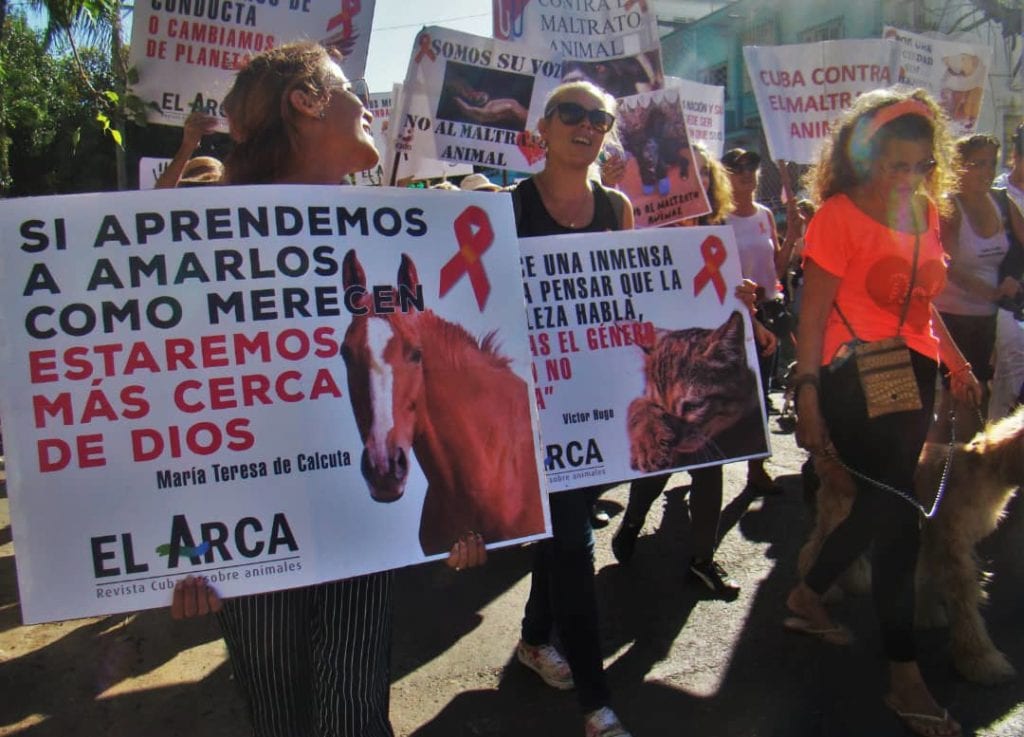
With regard to the procedure in order to get authorization, it was unique if you keep in mind the fact that previous marches had been organized by the only civil society organization that defends animal rights and has legal status here in Cuba.
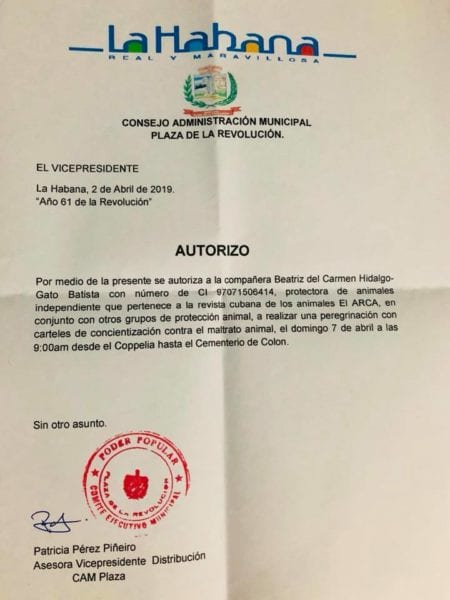
She notes: “We went to the police station on Zapata and C Streets first, where we were told that they don’t grant this kind of authorization and they sent us to Revolution Square’s Municipal Government offices. There, we were met by the Vice-president’s adviser and then, we met him in person. They both wrote out their consent and gave it to us.” The animal protector did all of this redtape alongside Odalis Jaramillo, a friend who defends the same cause.
Something she learned from this experience was that she had to belong to an institution or organization in order to get the government’s authorization. This is a requirement. As Batista is a member of El Arca’s team, the only magazine of its kind in Cuba, she was granted the authorization.
It’s also worth pointing out that, according to Article 209 of Cuba’s Penal Code, anyone who takes part in meetings or protests that take place and violate the legal requirements that regulate the exercise of these rights, is liable to one to three months in prison or a fine of to be paid in a hundred quotas. Meanwhile, Clause 2 of the same Article stipulates: Organizers of illegal meetings or protests are liable to three months to a year in prison or a fine to be paid in 100-300 payments.
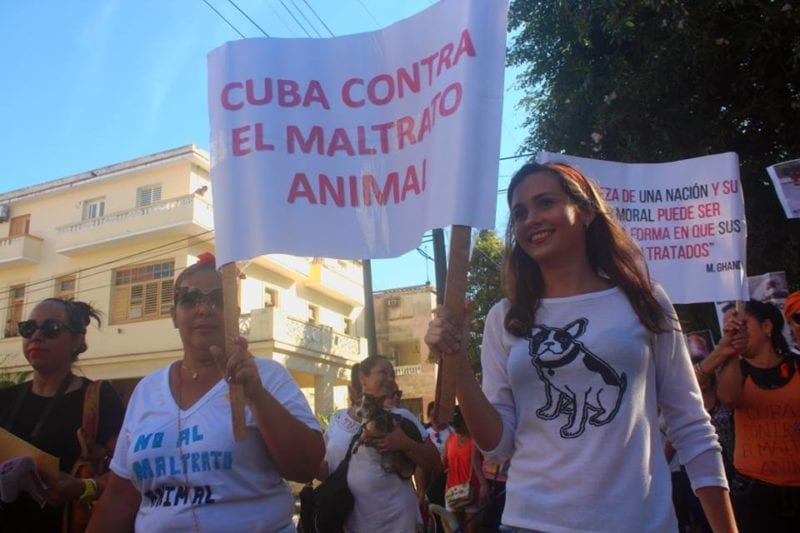
As there isn’t a law that establishes how these rights can be exercised and the steps that Cuban citizens need to take if they want to get government authorization for this kind of public action for whatever reason, it becomes a discretionary procedure. For example, in this case, there wasn’t any clarity about the requirement of belonging to an official organization.

The fact they had the government’s consent meant that they could call people to mobilize with posters up in public spaces and on social media too. Independent and unofficial media platforms also spread the news. Members of El Arca magazine’s creative team played a crucial role in spreading awareness of the event and its organization.
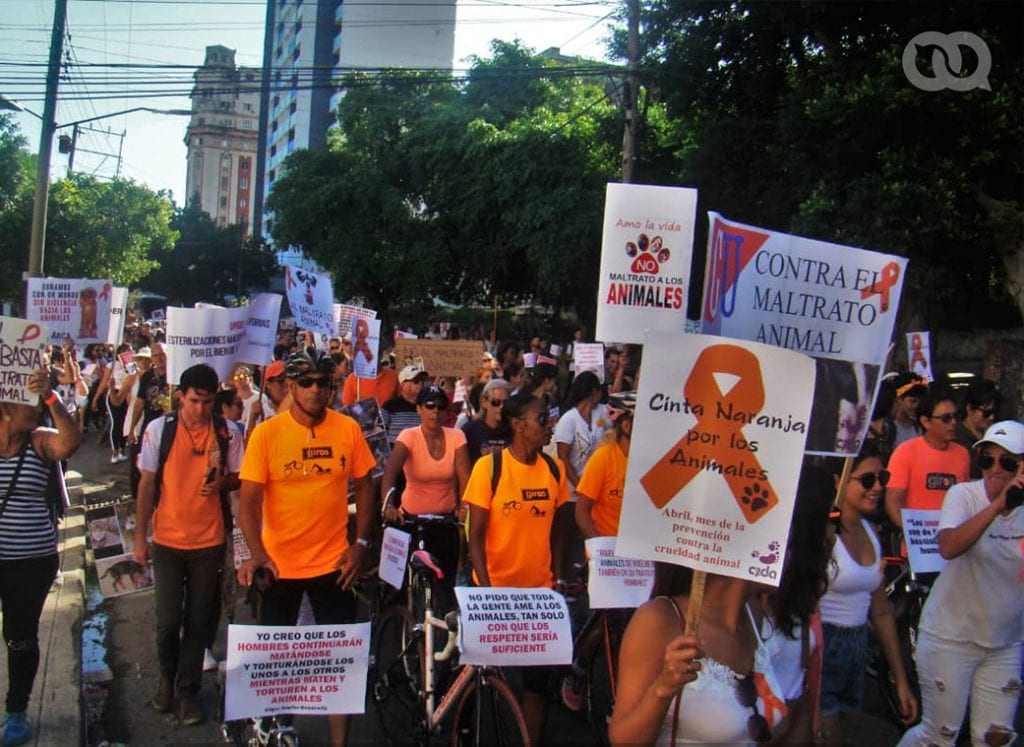
The news spread so far and wide that people came from other provinces. For example, Odalis Martinez forms part of a triathlon group that came from Matanzas to Vedado in Havana, by bike, “to see if they could get an animal protection act passed; because they do awful things to them: they throw them against walls, they cut off their heads, they throw them onto railway tracks.” “I say that if you don’t like animals, then don’t look at them, but you don’t need to abuse them,” she adds.
Fredy, a History student at Havana University, found out about the event on Facebook and was present to defend the idea that his companions (he doesn’t like to call them “pets”), “have the same rights as humans do.”
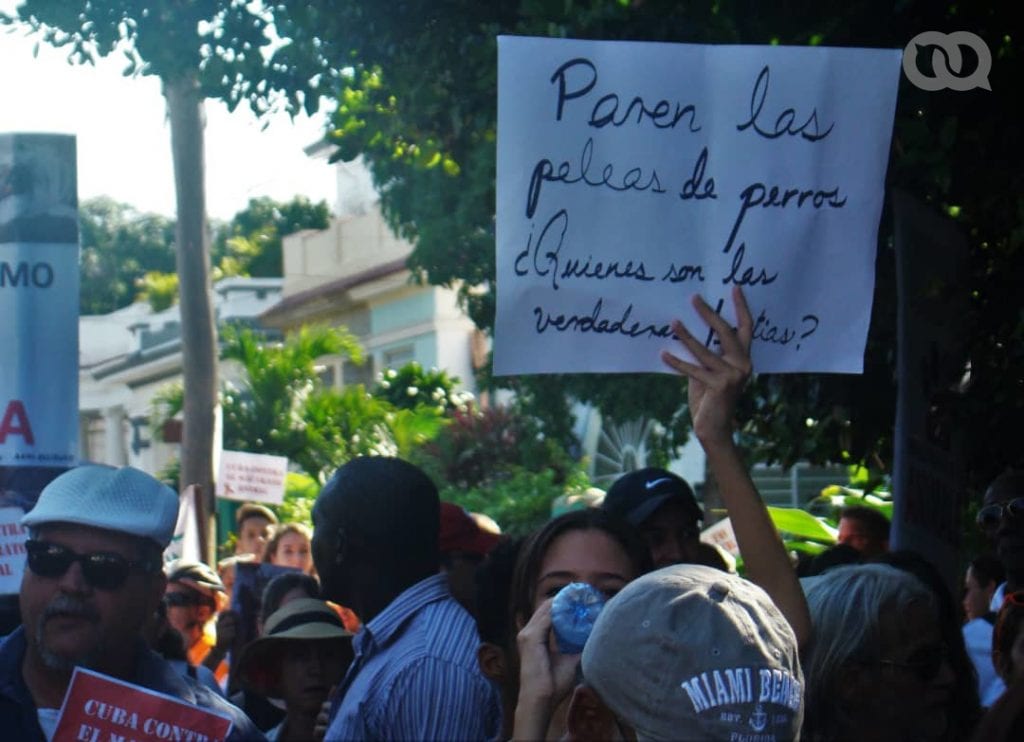
Non-governmental organizations were very important in the organization of the event. Natali, from Cubans for the Defense of Animals (CEDA), says: “we have always advocated for a law that protects animals and now we are marching against abuse, because this is the best way for the Cuban people to see how much the animal rights movement has grown in our country.”
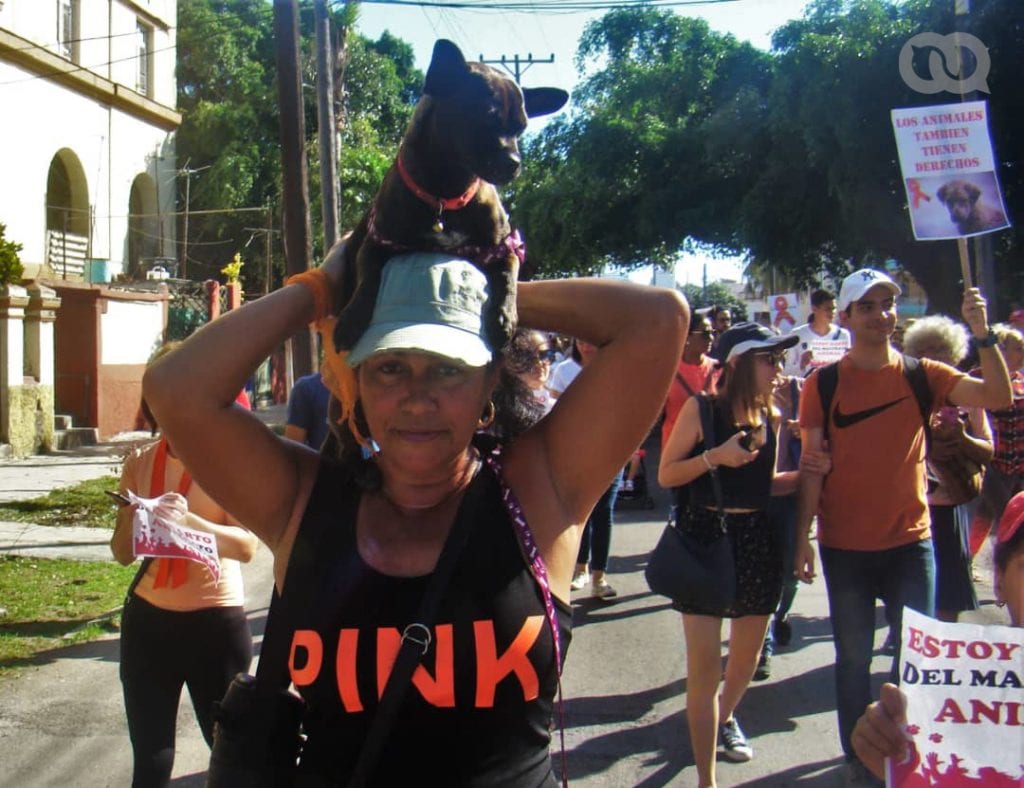
Various Veterinary Medicine students from the Agrarian University were also present, where there is a student association called “Vets for Animal Well-being”. They say that their work involves sterilizing, caring for and collecting abandoned animals. They say that they have never seen a crowd like this for any non-governmental reason and much less, for animal rights. Plus, they said that they have also demanded this sought-after protection act in their university’s debate on the constitutional reforms.

They all marched together in an uninterrupted pilgrimage, which was extremely careful so as not to detract away from their message. At some point, when people were approaching G Street, a police patrol car was waiting to cut off traffic. Protestors were shouting: “No more abuse!” and they were silenced by the organizers who asked that they specify: “No more ANIMAL abuse”.
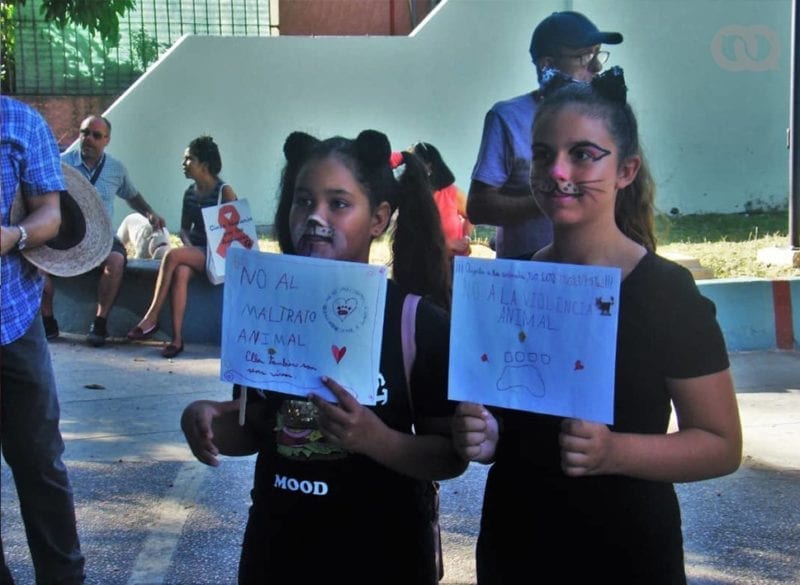
During the course of the march, some animal rights advocates stood out, such as Estela Munoz. She was there for the rights of her dog who she says is her only company at home and always eats the best. Without a ribbon, Estela was walking with a bunch of yellow flowers and energetically responded: “of course!”, when asked if an Animal Protection Act should be implemented and whether she would walk the whole way at 72 years old.

Twenty-something-year-old Arlet Gonzalez also took part in the march, who went with her rescued dog Luna. She wasn’t wearing an orange ribbon, or carrying flowers, but had instead decided to dye her hair this color the night before.
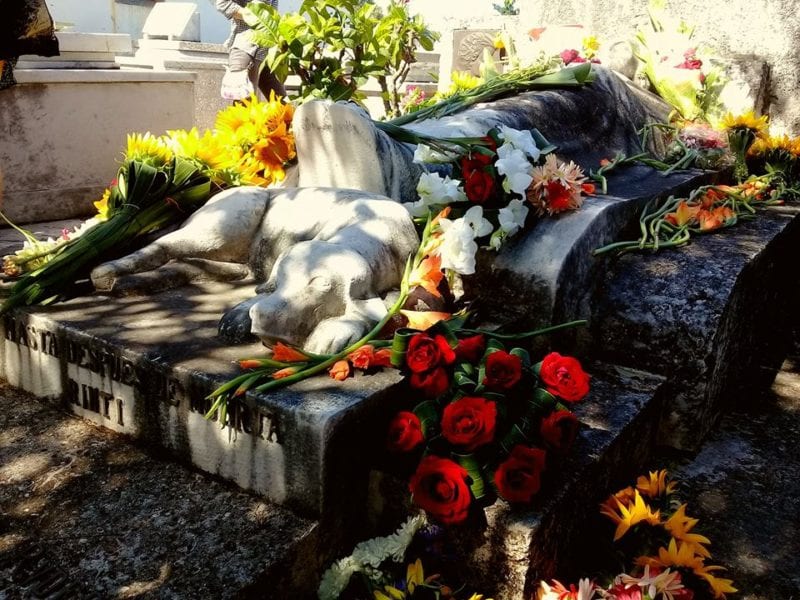
Towards the end of the pilgrimage, at Jeannette Ryder’s grave in Colon Cemetery, touching words from different organizers moved some of the more ardent protectors to tears. With everything that was said, Beatriz said: “Being an animal protector in Cuba is filing complaints, marching with placards, collecting signatures for a law and coming together with Aniplant, the only association with government recognition, or one of the many others that have appeared, with one mission: animal wellbeing.”
In Cuba, where an Animal Protection Act doesn’t exist, demands for its creation have become more and more frequent among some sectors of the population. Within the context of the implementation of the new Constitution and legislative activity to put it into practice, this march might be the driving force to getting this much-needed legal protection for animals.






Comments are closed.